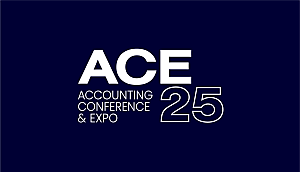We’ve barely caught our breath from the torrent of legislative changes, guidance and information emanating from the Commonwealth Government’s 2020 economic stimulus measures. With the current COVID-19 outbreak not showing signs of easing in Greater Sydney, many practitioners in New South Wales again find themselves as the key intermediary between their struggling business and individual clients and financial support from the government.
Two of the measures (COVID-19 Disaster Payments and the 2021 COVID-19 JobSaver payments) are co-funded by the Commonwealth and the NSW Government, but could easily be available to other states and territories should future extended lockdowns occur elsewhere. The COVID-19 Disaster Payments are available also to eligible workers in Victoria and Metropolitan Adelaide affected by their recent short lockdowns.
There is a sense of déjà vu — the law and the systems for JobKeeper were designed in haste last year but, in the main, did their job to support struggling businesses and households. JobKeeper is a fine blueprint, and it should be used as a precedent and much of that guidance material and concepts referenced for the present purposes.
So what’s on offer?
Amid an assortment of relief, including for payroll tax, land tax, and commercial, retail and residential leasing arrangements, the key support measures are:
- COVID-19 Disaster Payment
- 2021 COVID-19 Business Grant (CB Grant)
- 2021 COVID-19 JobSaver payment (JobSaver)
- 2021 COVID-19 Micro-business Grant (MB Grant)
- Small business fees and charges rebate (Rebate).
These measures are discussed below.
COVID-19 Disaster Payment
The Disaster Payment provides weekly payments of $600 for those workers who have lost 20 or more hours of work per week, or $375 for those who have lost at least eight hours but less than 20 hours of work per week, where they work or live in a Commonwealth-declared hotspot.
As announced on 28 July 2021, this will be increased to $750 and $450 respectively from the start of August 2021, but in the future, should any part of a state or territory be declared a Commonwealth-hotspot, the increased amount will be available from the first week of the lockdown.
Payments are made seven days in arrears after the commencement of the lockdown. The previous $10,000 liquid assets test was removed from 11 July 2021, and these payments are taxable.
A sole trader cannot claim a business support measure if they are claiming Disaster Payments, but eligible employees who have lost hours of work can receive Disaster Payments and this does not preclude their employer from being eligible for other support measures.
NSW 2021 COVID-19 Business Grant
A NSW business that has an aggregated turnover of $75,000 to $50 million (inclusive), total Australian wages of no more than $10 million, maintains its staffing levels as of 13 July 2021 and has a decline in its GST turnover of at least 30%, may be eligible for a tax-free CB Grant of up to $15,000. The business must have incurred expenses from 1 June 2021 to 17 July 2021 for which no other government support is available.
The decline in turnover (DIT) will determine the size of the grant:
- a $7,500 grant is available where the business experiences a DIT of 30% or more;
- a $10,500 grant is available where the DIT is 50% or more;
- a $15,000 grant is available where the DIT is 70% or more.
The DIT is determined by a minimum two-week consecutive period from 26 June 2021 to 17 July 2021 (Southern Border businesses measure this from 27 May 2021 to 17 July 2021) compared to the same period in 2019. The Service NSW web guidance originally advised a period from 26 June 2021 to 26 July 2021; this has since been corrected. Applications for the CB Grant are open until 13 September 2021. The CB Grant operates for the first three weeks only of a lockdown.
2021 COVID-19 JobSaver payment
Applying from the fourth week of a lockdown, the new JobSaver payment assumes the baton from the CB Grant. A business is eligible for a tax-free JobSaver payment if it has an aggregated turnover of $75,000 to $250 million (inclusive), maintains its staffing levels as of 13 July 2021 and has a decline in its GST turnover of at least 30%.
The fortnightly JobSaver payment is equal to 40% of the NSW weekly payroll (see below) but capped at $100,000 per week. Employing entities will receive a minimum fortnightly payment of $1,500 per week, while non-employing entities will receive a flat fortnightly payment of $1,000 per week.
The DIT is determined by a minimum two-week consecutive period within the Greater Sydney lockdown (26 June 2021 and due to end on 30 July 2021 — this is expected to be extended following the extension of the lockdown in Greater Sydney to 28 August 2021) compared to the same period in 2019. Applications for JobSaver are open until 18 October 2021.
NSW 2021 COVID-19 Micro-business Grant
In an acknowledgment that smaller businesses in NSW are not eligible for the CB Grant, a business that has an aggregated turnover of more than $30,000 to less than $75,000, maintains its staffing levels as of 13 July 2021 (if it has employees) and has a decline in its GST turnover of at least 30%, may be eligible for a tax-free MB Grant of $1,500 per fortnight. The business must have incurred expenses from 1 June 2021 for which no other government support is available.
The DIT is determined by a minimum two-week consecutive period from 26 June 2021 to 30 July 2021 compared to the same period in 2019. Applications for the MB Grant are open until 18 October 2021.
NSW Small business fees and charges rebate
The Rebate is available to businesses operating in NSW that have total Australian wages of less than the NSW payroll tax threshold for 2020–21 of $1.2 million and have eligible NSW and local government fees and charges due and paid from 1 March 2021. The Rebate takes the form of a $1,500 digital voucher. Applications for the Rebate can be made until 30 June 2022.
General observations
The rules are not legislative amendments; they take the form of Guidelines and Terms and Conditions on the Service NSW website. The guidance can be inconsistent across the measures. This is best illustrated by the more comprehensive second tranche of guidance (JobSaver and MB Grant) which provides greater clarification than the initial release of guidance (CB Grant and Rebate). It is hoped that the initial guidance will be updated to include the welcome clarifications in the latter guidance. We understand the NSW Government will move to provide further guidance on issues where questions have arisen.
The minimum two-week period must be consecutive days but does not have to be confined to a two-week period and can start and end on any day of the week within the prescribed DIT period.
The evidentiary requirements vary across the measures, and indeed within each measure, depending on the type or extent of the payment and whether the business is on the ‘List of highly impacted industries’. A letter from a qualified accountant, registered tax agent or registered BAS agent may be required in some cases. While this is not an audit or assurance engagement, the accountant will need to consider their risk exposure and extent of reliance on client information. Ensure that you are using the latest template available on the Service NSW website as these have already been updated without notice.
Businesses apply for financial support by using or creating their own MyServiceNSW account. Much to the chagrin of accountants, there is no ‘portal’ to apply for the support measures in their capacity as an agent acting on behalf of a business client.
The following concepts apply in defining key terms (subject to the observation above that not all of the rules use consistent expression):
- Aggregated annual turnover — uses the income tax concept, as defined in s 328-115 of the Income Tax Assessment Act 1997 (Cth). The grouping rules relating to entities connected with the business and affiliates of the business apply.
- (Decline in) turnover — uses the GST concept, as defined in s 188-10 of the A New Tax System (Goods and Services Tax) Act 1999 (Cth). There is still confusion about whether the cash or accruals method should be applied, and whether a business can apply a method to calculate its DIT that differs from the methods it adopts in preparing its business activity statement (BAS).
- Maintain employee headcount on 13 July 2021 — means the employer will not take active steps to end the employment relationship with their employees. Employees who have been stood down under the Fair Work Act 2009 (Cth), take leave without pay or reduce their working hours are considered employees for the purpose of the headcount. Increasing the headcount without ending any employment relationship will not result in a business becoming ineligible. Further, the 13 July 2021 headcount is not taken to be reduced if the reduction in a business’ employee headcount results from circumstances outside the control of the employer, such as voluntary resignation or death.
- NSW weekly payroll — based on the amount reported at W1 on the most recent BAS provided to the ATO prior to 26 June 2021 for 2020–21, that relates to employees who usually worked, or were based, in NSW during the relevant BAS period. As this definition relies on what is reported at W1 on the BAS, it excludes amounts paid to contractors.
- Total annual Australian wages — relies on the Revenue NSW meaning under the Payroll Tax Act 2007 (NSW), which includes certain contractors.
As the above observations point out, there are currently inconsistencies and a lack of guidance on some key aspects of the measures. Most of these issues were considered, and resolved, by the ATO as part of implementing JobKeeper, in collaboration with representatives from the professional associations throughout 2020. It is hoped that many of these issues will be resolved very soon, leveraging this existing guidance material.
Stay well, everyone.
Robyn Jacobson, senior advocate, The Tax Institute

 Login
Login






